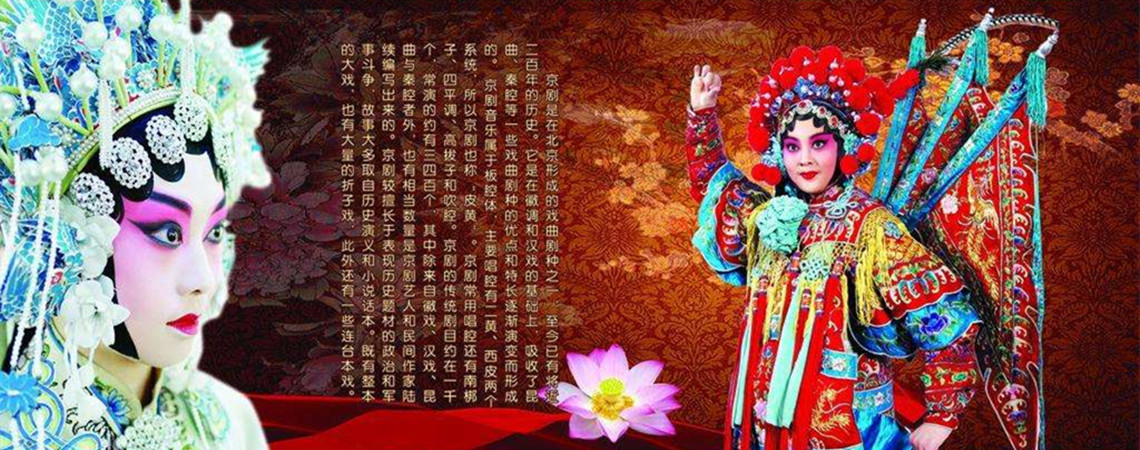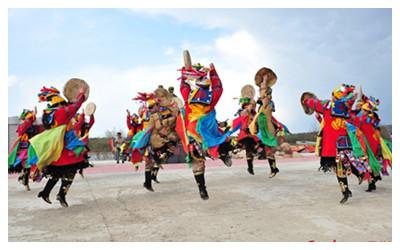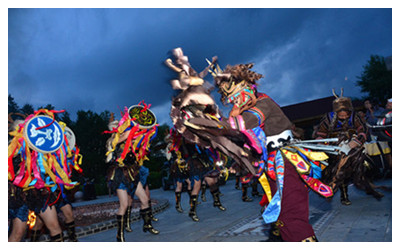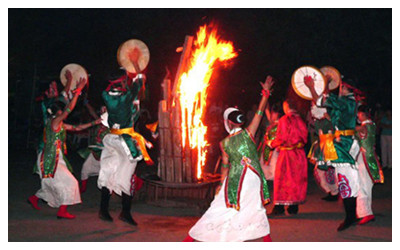Skype: neodalle-travel
Tel: +86 135 7447 2266
E-mail: sales@visitaroundchina.com

 Shaman Dance, also called "Tiaodashen" by common people,is the kind of dance was popular among northern Chinese tribes, a result of primitive hunting, fishing and totem worshipping activities in ancient times. Shaman Dance was performed by Shaman (witches) in praying to gods, sacrificing, dispelling evils and curing diseases.
Shaman Dance, also called "Tiaodashen" by common people,is the kind of dance was popular among northern Chinese tribes, a result of primitive hunting, fishing and totem worshipping activities in ancient times. Shaman Dance was performed by Shaman (witches) in praying to gods, sacrificing, dispelling evils and curing diseases.
Shaman Dance for Xibo, Oroqen ,Zhehe and Ewenki
From the clothes, musical instruments and dance movements of Shaman Dance today, one can find relics of primitive Culture. For example, Shaman of Oroqen and Ewenki nationalities always decorate their clothes with beast bones or teeth; their musical instrument "Zhuagu" (a drum that can be held in hand) is covered with beast skin and their performances imitate images of bear, hawk and deer.
 Saman Dance for Manchu
Saman Dance for Manchu
The Manchu people call the Shaman Dance "Tiaojiashen" (inviting gods of the house) or "Shaoqixiang" (the bannermen rather than the Han people invite the gods). The Shaman ties a long bell to his or herwaist in performance and holds a drum. Gods in charge of different sectors of people's lives are invited in the sound of drums and the bells. After each god arrives, the Shaman will imitate the movements of the god. For instance, if he has invited the God of Hawk, he will imitate flying and pecking at the food on the table; if he has invited the God of Tiger, he will have to jump, scratch, spring and communicate with people on the spot; or he should play with burned incense in magical darkness, showing that the God of Golden Flower has arrived.
Saman Dance for Mongolian
 The Mongolian ethnic group calls Shaman Dance "Bo" or "Bo Dance". In the past, Shaman always wore a cap with a hawk-shaped ornament, a skirt with ribbons and nine bronze mirrors in his waist to show his power The musical instrument was one-sided drums. One Shaman was a major performer, the other one or two beat drums as accompaniment. The dance movements were imitation of birds, beasts or all kinds of spirits. The highly skillful one could turn round and round continuously with a multi-sided drum in hand. Such performances remain today, but dancers no longer spin that well.
The Mongolian ethnic group calls Shaman Dance "Bo" or "Bo Dance". In the past, Shaman always wore a cap with a hawk-shaped ornament, a skirt with ribbons and nine bronze mirrors in his waist to show his power The musical instrument was one-sided drums. One Shaman was a major performer, the other one or two beat drums as accompaniment. The dance movements were imitation of birds, beasts or all kinds of spirits. The highly skillful one could turn round and round continuously with a multi-sided drum in hand. Such performances remain today, but dancers no longer spin that well.
Jenghiz Khan, who was thought to be "God's favored one", believed in Shaman very much. No matter in war or in other big occasions, he paid much attention to Shaman's opinions. He looked on "White Hawk" as the God of War, which could guarantee him victory.
Now, people still regard the hawk as a symbol of victory. Wrestlers today go onto the racing field by imitating the hawk jump, which, they believe, can enhance their confidence. In some areas, the ceremony of "jumping white hawk" is held to Cure uncommon diseases of women. From it we see the deep influence of Shamanism on Mongolians.
On May 18, 2010, Saman Dabce was listed by the Ministry of Culture and Tourism as the third batch of national intangible cultural heritage list recommended projects,
 Ask Questions ?
Ask Questions ?